Too many ways to die: Inside the forgotten war in Sudan
Torture and sickness are unremarkable ways to die in Sudan, where bullet and shellfire, enforced starvation, looting and rape are all part of the arsenal of war.
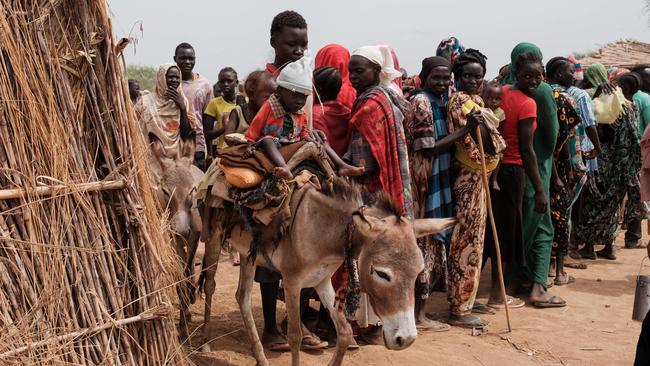
The tortured man was buried in haste, the scrape of shovels, the thump of picks, a prayer for the dead. His wrapped body was lowered into the ground, a hole barely deep enough to be any more than a shallow grave, while all around men toiled to open the earth in readiness for more.
A little after the recitation of the duaa began, a man stepped forward with the body of his infant son held out before him, and asked if his dead child could share a place in the grave for the journey beyond.
So they tucked the body of the baby boy – he was two months old and had died of sickness – against the chest of Mohamed Abdul Salam, 37. A builder nicknamed Bundug, he had weighed 13 stone before his imprisonment in a Rapid Support Forces (RSF) jail. He had emerged from jail only 10 days earlier weighing 5 and a half stone, having been beaten, tortured and starved, and was unable to walk. He had died because his shrunken stomach could no longer digest food.
In this way, as kites wheeled in the sky over Omdurman’s Ahmad Shafi cemetery, and shellfire rumbled across the River Nile, the dead man and the little boy left this world, strangers in life, companions in death.
No sooner had the dust been levelled on their grave than a truck pulled up at the wall with two more bodies inside: another adult and a child. The digging continued.
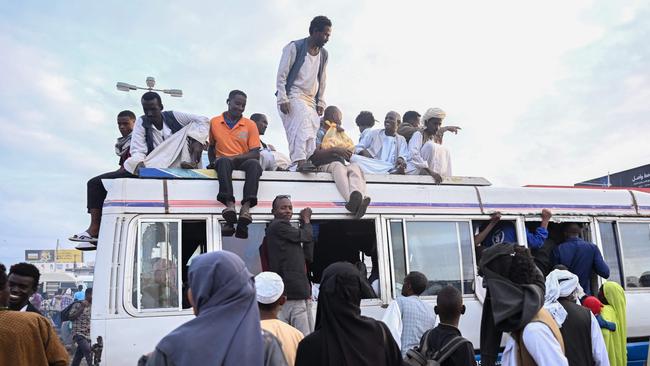
Abandonment
Torture and sickness are unremarkable ways to die in Sudan, where bullet and shellfire, enforced starvation, looting and rape are all part of the arsenal of war.
Thousands of dead – the corpses of the slain, the sick and the hungry – have been buried in the cemeteries across the country since the war began in April 2023. A multitude more have died of malnutrition in the desert unrecorded, their fate unseen.
Yet for all the scale and gravity of the conflict, which threatens the lives of millions and could transform Africa’s third largest country into a failed state, Sudan’s war has remained at the periphery of international attention, relegated to the shadows of conflicts in Ukraine and the Middle East.
Among Sudanese medical staff struggling to save lives, anger often accompanies a sense of abandonment.
“I don’t think the international community cares,” said Dr Jamal Eltayeb Mohamed, the director at the al-Naw hospital in Omdurman, one of the few medical facilities to remain operational in the war-ravaged city, as he stood in a ward of wounded people.
“I think they just don’t know what is happening here. They don’t know about the impact of this war on the poor and the vulnerable, who lose their livelihoods, their jobs, their means of survival. Everything around us is being destroyed.”
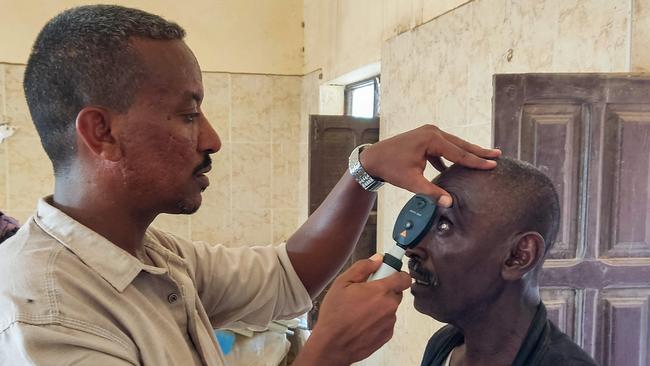
Between 60 and 70 per cent of Sudan’s medical facilities have been destroyed, along with most of its pharmaceutical plants. The strain on the remaining facilities is intense. Al-Naw hospital receives between 500 and 600 patients a day - many patients were being treated as they lay on the floor.
Falling shells had not discriminated among those they injured. The old and young, man, woman and child - all equal in the face of scything shrapnel.
Moments after the corpse of one adult was carried out of the main hospital doors on a bench, the shell-blasted form of an elderly man, badly wounded in both legs and his chest, was rushed in through the same doors on a stretcher, bleeding so heavily that it left a trail along the floor behind him.
“The WHO, the Red Cross – where were they?” Dr Mohamed asked bitterly. “We never even saw them here. Maybe they flew into Port Sudan and then flew away again. Apart from MSF [Medecins Sans Frontieres], we feel abandoned.”
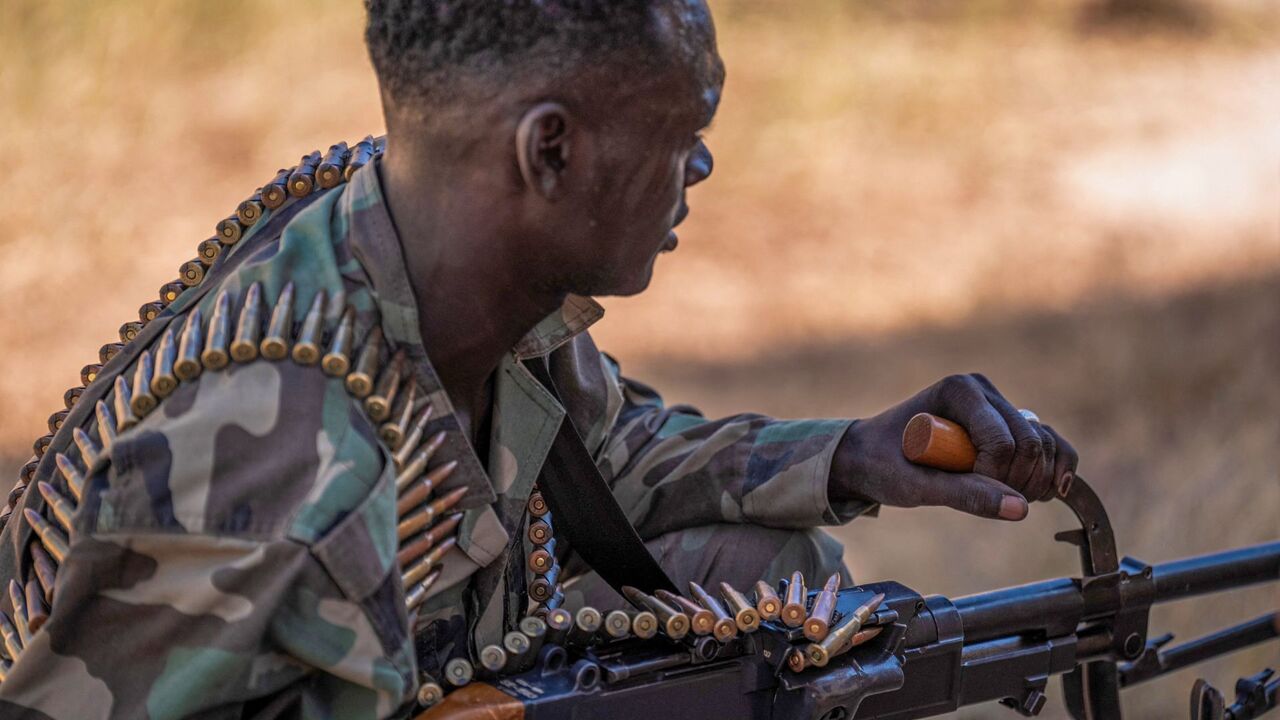
He turned to attend to a girl in a nearby bed. Ghaytha’a, six, had been cleaning her teeth the previous morning in the yard of her family home in Omdurman’s al-Ghamair district, when an RSF shell dropped out of the sky. Her brother, Mohammed, nine, was playing on his bike beside her. The shell blew his head and arm off.
Now Ghaytha’a lay speechless, shrapnel wounds in her left arm and leg, watched over by her grandmother.
The family had already been displaced once when the shell killed Mohammed. His grandmother murmured: “Our child was torn apart in front of us.”
The scale of the crisis
War erupted in the capital, Khartoum, and the neighbouring city of Omdurman on April 15, 2023, triggered by a power-sharing dispute between two erstwhile allies: General Abdel Fattah al-Burhan, commander-in-chief of the Sudanese armed forces, and General Mohamed Hamdan Dagalo, known as “Hemedti”, whose paramilitary RSF originated in the infamous Janjawid of a previous era.
Funded by regional powers including the United Arab Emirates, Egypt, Iran, Russia and Chad, the violence rolled westwards and south across the country, taking the lives of perhaps 150,000 people in less than two years, displacing 11 million within Sudan’s borders, and exposing 26 million to a hunger crisis.
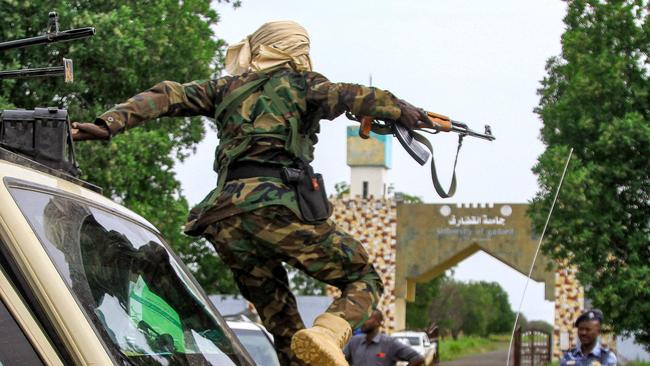
A famine affecting 500,000 people was declared four months ago in Northern Darfur, a state in the west, and the United Nations has warned that with no end in sight the damage caused to Sudan’s agriculture, economy and irrigation systems may already have destined it to a nationwide famine rivalling the scale and horror of the one across the Horn of Africa in 1984.
The US, leading the response, has given more than $US2bn in aid to Sudan since the start of the conflict, and in November the British foreign secretary, David Lammy, announced a doubling of humanitarian assistance to Sudan to 113 million pounds. Nevertheless, the international response to the crisis has been laggardly.
By the end of last year the UN’s 2024 appeal for $US2.7bn in humanitarian aid for Sudan had received only 57 per cent of its target.
As rival paramilitary groups allied to the two main adversaries proliferate across the country, and a growing gold-for-guns trade with regional powers finances and entrenches the conflict, optimism is absent in every prediction.
“The situation overall remains not just a humanitarian crisis,” the US special envoy to Sudan, Tom Perriello, said, “but a regional security threat that is quickly headed towards the possibility of either a split or failed state in an area of the world where Bin Laden spent years building al-Qaeda.”
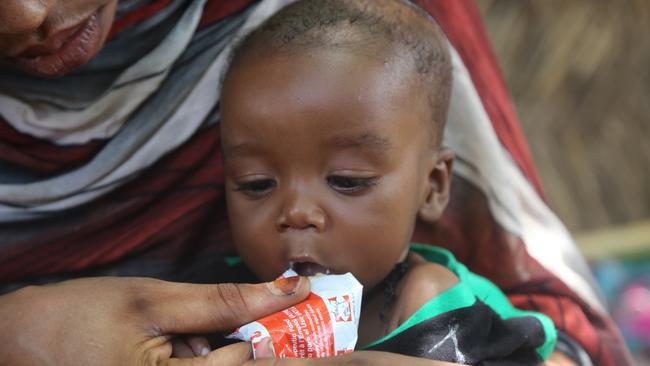
The undertaker
In the ruins of Omdurman, Abdin Dirma has become a local celebrity.
Passing cars hoot at the chief undertaker of the Ahmad Shafi cemetery, children wave and stop to shake his hand. He even appears on a giant billboard, dressed in his trademark green jalabiya and wearing a faded skullcap, hands outstretched in prayer beside a group of marching Sudanese army soldiers.
“Everyone here knows me now,” he mused beside the fresh earth of new graves, a couple of days after I had watched him bury Bundug and the unknown infant.
“I’ve buried their sons, their husbands, daughters, wives, mothers; soldiers, writers, janitors. This war is killing people by the thousand, and in so many different ways.”
Some days Dirma, 60, presides over dozens of burials, and the cemetery boundaries have been extended three times over the past year to incorporate the growing casualties. The graves spill outside the walls of the necropolis, along the roadside and in land that was once a car park.
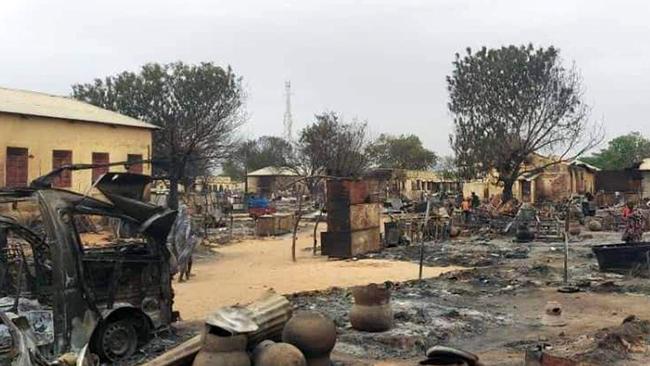
A report in November from the London School of Hygiene & Tropical Medicine estimated that in Khartoum state alone, the area incorporating Omdurman and Khartoum, more than 61,000 people had died of all causes since the war began, a 50 per cent increase in the pre-war rate.
The report, which proved that wartime mortality figures were many times worse than previous estimates, also noted that 90 per cent of war deaths went unrecorded.
“When I was a kid and worked in this cemetery it seemed that we buried just two or three people a day,” Dirma continued. “These days, with war and sickness and so many people’s immunity weakened by stress and hunger, we’re burying 15 to 20 a day, sometimes 50. Today I’ve buried 20, at least 15 killed by shelling.”
Striding among the dead, he explained that it was now common practice to bury children, sometimes two at a time, alongside the corpses of adults, allowing the souls of the dead mercy and companionship.
“Some people tell me that one day they’ll bury me here too,” the undertaker shrugged. “I tell them I’ll bury them first.”
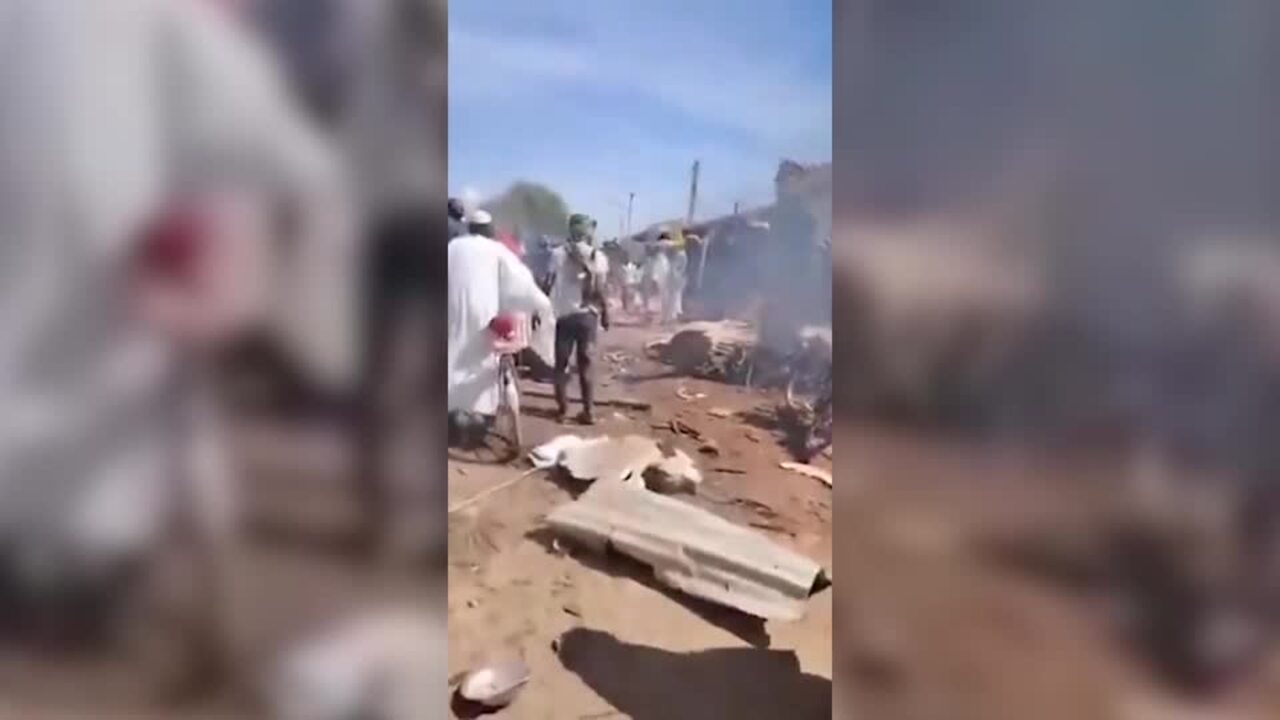
Both sides are bad
In the early months of the war in 2023 the RSF - backed by the UAE and using cross-border weapons and funding lines through Libya, Chad, Central African Republic and South Sudan - seized control of most of Khartoum, much of Omdurman and four out of five states in Darfur, driving the Sudanese army (SAF) back from key locations.
Last year the SAF regained some of the initiative, capturing large areas of Omdurman back from the RSF in February and March, and pushing east across the Halfaya and White Nile bridges into Khartoum in September.
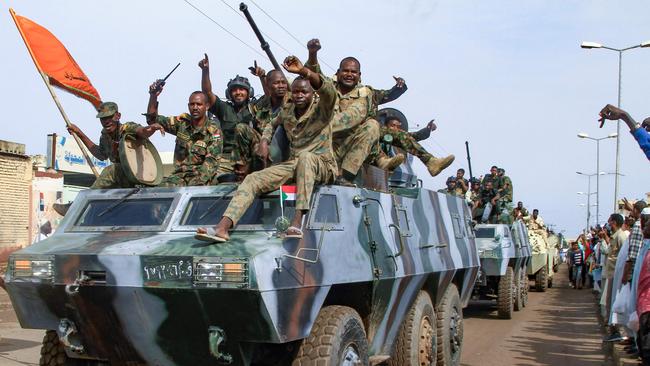
Swathes of Omdurman and parts of North Khartoum visited by The Times have been obliterated by the fighting, in addition to being burnt and looted by the RSF. Hatred has proliferated among the ruins.
“I will hate them until death,” an SAF lieutenant from the Corps of Engineers said as he walked through the rubble in Omdurman. “The RSF brought only ruin and destruction here.”
He described how his unit endured a nine-month siege of his base, encircled by the RSF, until they were relieved last year. “My soldiers were so hungry that they ate my three cats,” he said.
Despite the slow improvement in SAF fortunes around the edges of the capital, the war remains dynamic and shifting, its outcome uncertain.
Foreign weaponry, including strike drones, electronic warfare jammers, multi-barrel rocket launchers and heavy artillery munitions, continues to enter the country, bolstering the confidence of the combatants in a military solution even as the civilian casualties mount.
Sometimes the new weaponry led to impossible fantasy. In North Khartoum’s Samrab district, captured by the SAF in September, I met a young sharpshooter armed with an M93 rifle who boasted that he had killed 90 enemy soldiers at ranges of up to five miles.
Though the RSF has been repeatedly accused by the UN and human rights groups of a campaign of ethnic cleansing, rape and enforced starvation, the SAF – whose regional allies include Egypt, Iran and latterly Russia – have also been accused of war crimes.
On December 9, an SAF air strike killed dozens of civilians in the town of Kabkabiya in North Darfur. The attack, cited by Amnesty International as a war crime, was just the most recent of a pattern of SAF air strikes against markets used by the RSF that have caused hundreds of civilian deaths.
“One of the challenges we have in this war from the beginning, because it doesn’t fit a neat narrative, is that you don’t have a good side and a bad side,” said Perriello, the US special envoy. “You have a bad side, and an even worse side.”
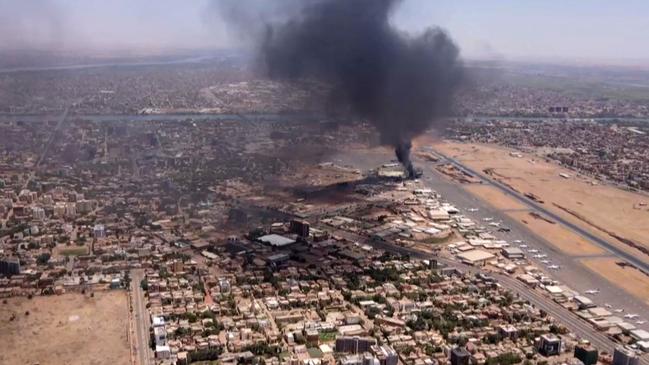
The death of Bundug
The casual nature of the gratuitous cruelty that had killed Bundug the builder seemed the embodiment of one of war’s most frequent revelations: the banality of evil.
Bundug had been living in the Fitehab quarter of southwestern Omdurman when the RSF seized control of the area. He disappeared without a trace. Unbeknown to his family, he had been arrested by the RSF on suspicion of being an SAF collaborator, and interned in Soba prison in Khartoum.
“We had no idea if he was alive or dead,” his sister Rania, 40, told me at her home in an SAF-held district of Omdurman.
Smoke drifted across the skyline on the opposite side of the river, where sporadic shelling thumped into RSF positions in Khartoum. Shards of shrapnel, scattered lumps of rubble and a bullet-riddled vehicle lay in the street. On a nearby wall faded graffiti from the days of pro-democracy protests five years ago, also sprayed with gunfire, reminded the few passers-by of dusty dreams of civilian rule.
In November, after a year of silence from her brother, Rania received a phone call from a man who had found Bundug, starved, beaten and close to death, lying on the street, where he had been dumped after the RSF suddenly released him from prison.
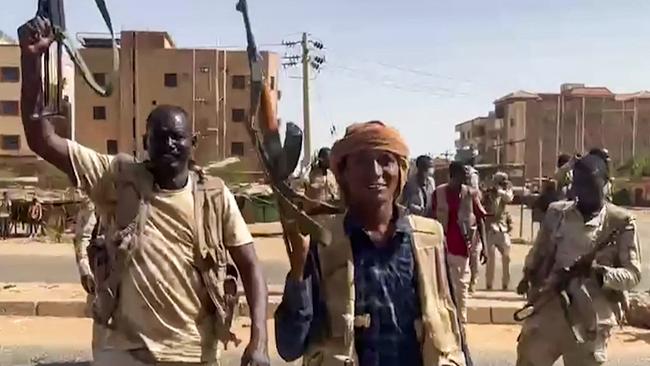
Rania travelled through 38 RSF checkpoints to recover her brother. When she finally found him, he was unable to stand and so emaciated as to be scarcely recognisable.
“He couldn’t walk,” she said, “so I found a wheelbarrow to carry him.” She wheeled her brother to a bus station, and helped him board a minibus back through RSF lines to an SAF sector of the city. At every RSF checkpoint on the route back, she and her brother were beaten with sticks by RSF fighters, she said.
Eventually, after a protracted journey of pain and humiliation, she brought her brother home. There, Bundug described to her a year of horror in captivity, of being fed a cup of lentils a day, of being repeatedly beaten, and seeing other prisoners die through beatings or starvation.
Yet however much Rania tried to feed her brother, Bundug was suffering so acutely from malnutrition, and possible internal injuries, that he could not stop himself vomiting. His weight continued to fall. Ten days after she had rescued him, Bundug died.
Torture cells
Bundug’s fate was far from unique. Every former captive of the RSF I encountered told of repeated beatings, prison starvation and horrific overcrowding. In Omdurman, once the SAF had forced the RSF out of the city’s central souk in March last year, they found several improvised detention sites where prisoners had been tortured.
When they recaptured the National Radio and Television Corporation headquarters, SAF soldiers discovered that the accounts department, a series of concrete outrooms with barred doors and windows, had been used by the RSF to imprison hundreds of men and women over the course of several months. In one cell, bloodstained mattresses and a woman’s bra lay on the floor. Hand prints in grime, clawing down the wall near a cell door, spoke of awful desperation.
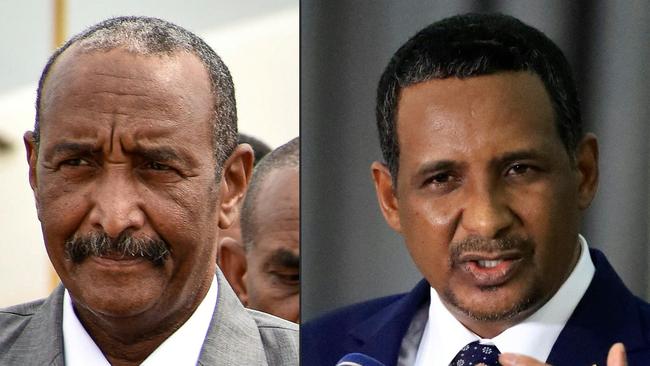
Mudather Ibrahim Abbas, 50, a businessman, was held in these cells for a week. He had been arrested by the RSF at his home near the Mahdi’s mausoleum in Omdurman, accused of spying.
Threatened with being sodomised with a bottle during his interrogations, Abbas was beaten so badly with whips and cables that every morning in the cells he had to peel off his traditional ankle-length jalabiya to stop it fusing with the scabbed wounds on his back, dry it of blood, then put it back on.
“The RSF fighters beating us there were about 15 or 16 years old, the same age as my sons,” he told me. “They kept beating me shouting ‘you are intelligence, you are a spy! Just say it’.”
The men in his cell, 37 of them, were crammed so tightly together that they slept at night head to toe like tinned sardines. One night the 22-year-old man next to Abbas suffered breathing difficulties and died. “I had to remain beside his body for four hours until the RSF removed it,” Abbas said. “I have no idea how or where he was buried.”
Walking through the artillery-shattered streets around the TV station, SAF soldiers showed me multiple improvised graves, some partly exhumed by dogs, where civilians had been buried. It was unclear whether they had died in shellfire, or in RSF cells. Bloodstained clothes hung in the trees. On one grave, a cross made of twigs and a torn woman’s dress marked the resting place of a dead Christian.
Grace and grief
There is an Arabic word that surmises the sense of destiny which, in the Islamic faith, allows for fatalism: maktoub ("it is written").
When the shelling began, and the shells killed children, it was difficult to read the casual award of their deaths as being part of anything that could be righteously preordained. Nevertheless, even in the face of the most acute suffering, a pervading sense of fatalism often remained, a grace rather than a carelessness.
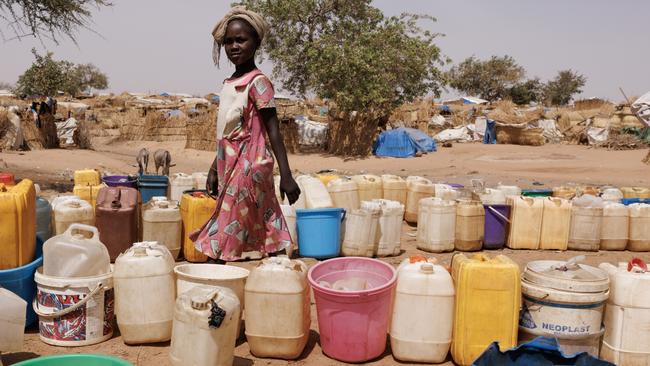
Perhaps this form of acceptance was indeed linked to faith, or perhaps it was born of necessity, an awareness that in the absence of hope there was no other option but endurance in a catastrophic war that has no foreseeable end.
I encountered it once more when in Omdurman’s al-Ghamair district I met Salma Ahmad al-Obeid, whose wounded six-year-old daughter Ghaytha’a I had earlier seen in the al-Naw hospital. Her son Mohammed had been torn apart by an RSF shell in the front yard of their single-storey home.
Her eyes heavy with weeping, Salma, 30, spoke slowly as she described how she and four of her six children were inside about 7.30am, as Ghaytha’a cleaned her teeth in the yard outside, and Mohammed played on his bike. Then the shell exploded.
“I heard my daughter screaming ‘Mummy, Mummy, Mummy’ and I ran out,” she said. “My children followed me. There was smoke and dust everywhere. We saw Ghaytha’a lying wounded on the ground. Then we saw Mohammed. He had been tossed across the other side of the yard by the wall …”
Her voice tailed away. At that moment Salma’s eldest girl, Romysa’a, walked over and put three photographs of Mohammed on the ground to show me. All the pictures were from before the war and the little boy stared out at the camera seated with his mother and sisters. In turn, Romysa’a stared at the picture, at her brother’s flawless skin, his smart white shirt, his expression of innocent seriousness.
Suddenly she gasped, clutched her eyes, and ran sobbing across the yard, a very different vision in her mind.
For a moment there was silence. Then Salma spoke again. Grief and horror weighed her words but, much more than these, was the grace in her request. “I ask Allah to make me a little patient at this time,” she said quietly. “I need nothing more than that.”
Timeline
2018: Protests against bread prices escalate into mass protests
April 2019: The Sudanese military topples President Bashir. Talks with civilian opposition begin to transition Sudan to a democracy
June 2019: At least 100 pro-democracy protesters killed by the military
August 2019: Civilian leaders and the military agree to share power for a three-year transition period. Elections are scheduled for 2023, and a council of ministers is formed under prime minister Abdalla Hamdok
2020: The landmark Juba peace agreement ends fighting between the government and a number of rebel groups, ending decades of conflict
October 2021: Amid growing fractures in the civilian alliance, and renewed street protests, the military arrests Hamdok and five civilian ministers in a coup
November 2021: Mass protests against the coup result in Hamdok being reinstated as prime minister
2022: Unable to form a new government Hamdok resigns from his post
2023: A power struggle between General Burhan, of the Sudanese armed forces, and General Dagalo, of the Rapid Support Forces, or RSF, breaks into the open. Fighting spreads across the country

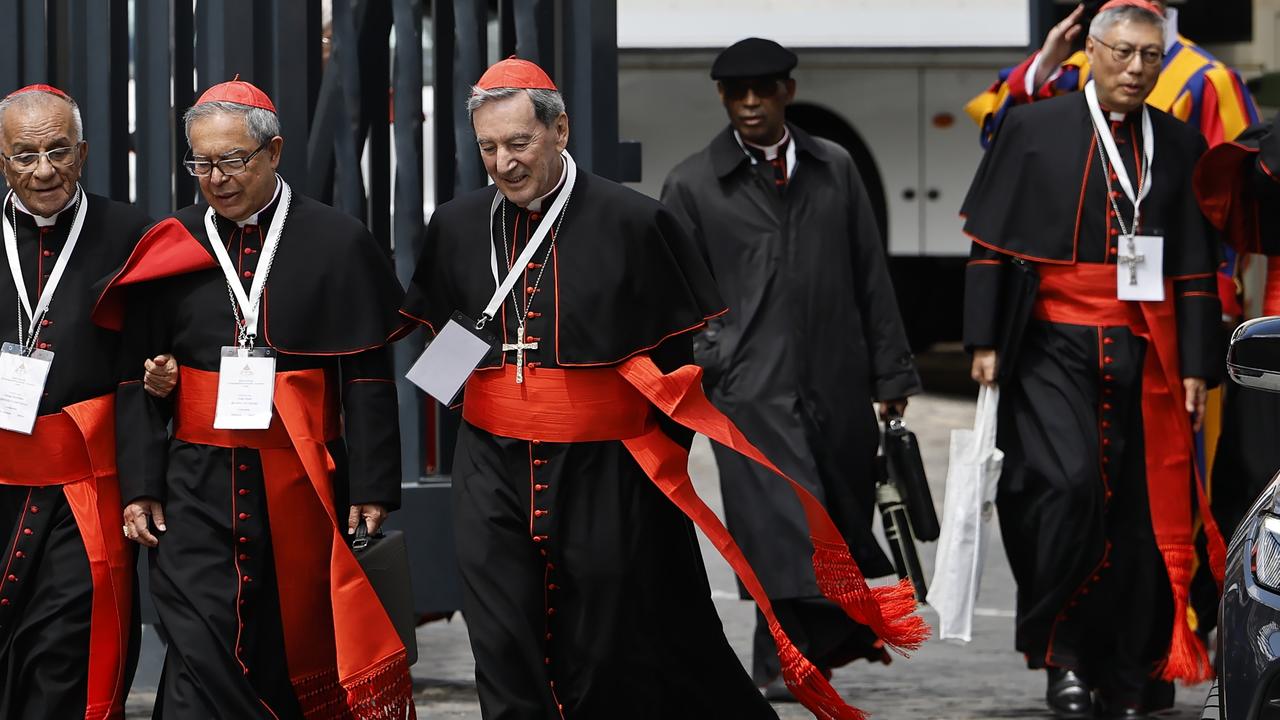
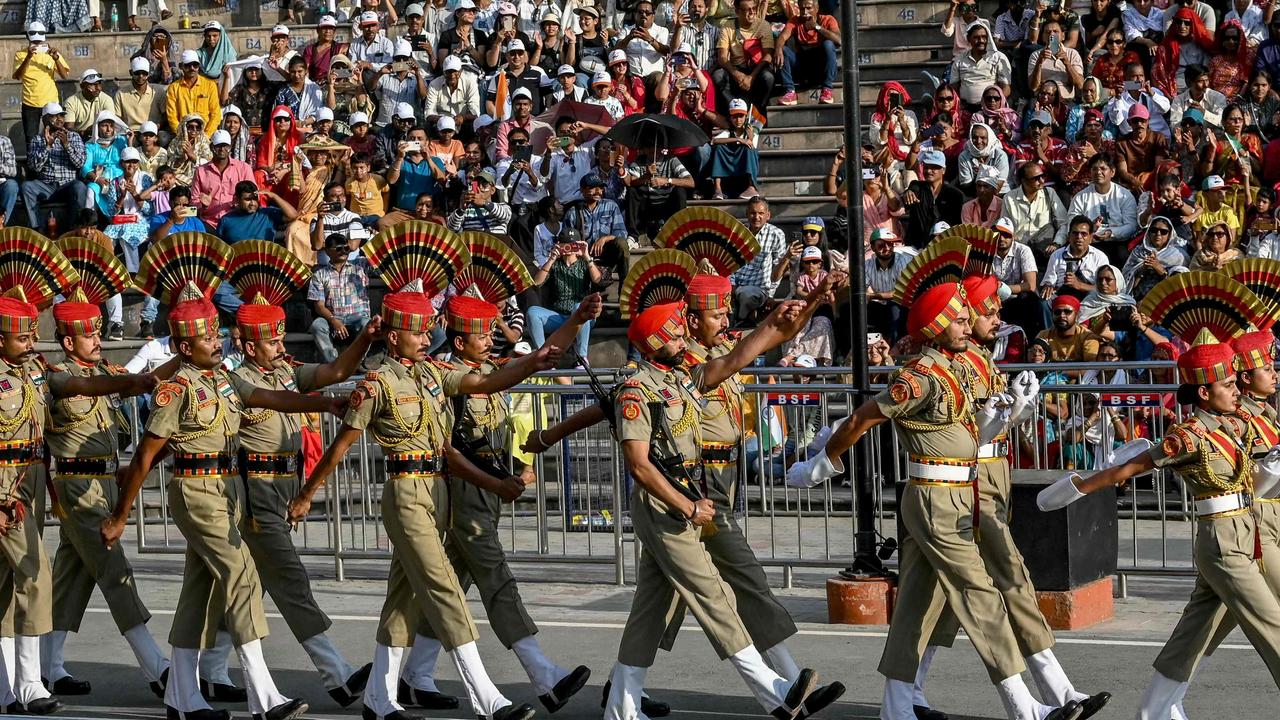
To join the conversation, please log in. Don't have an account? Register
Join the conversation, you are commenting as Logout